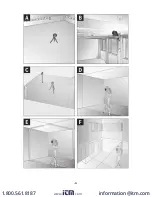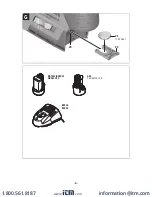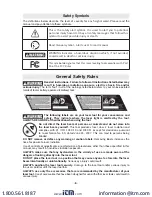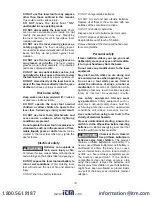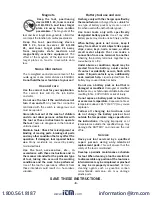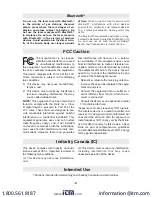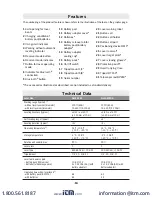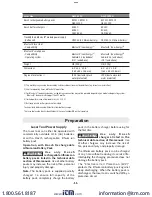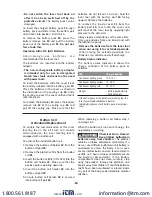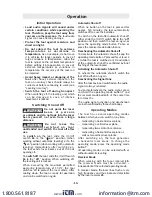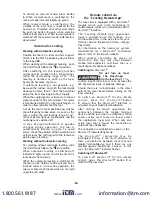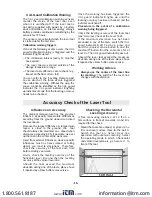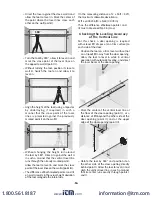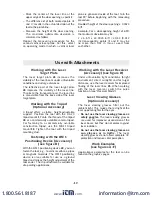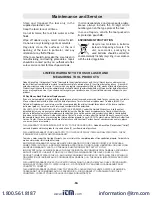
-17-
– Mark the center of the laser line at the
upper edge of the door opening as point
IV
.
– The difference
d
of both marked points
III
and
IV
results in the actual deviation of the
tool to the plumb line.
– Measure the height of the door opening.
The maximum admissible deviation is
calculated as follows:
Repeat the measuring procedure for the
second vertical laser plane. For this, select
an operating mode in which a vertical laser
plane is generated aside of the tool. Turn the
tool 90° before beginning with the measuring
procedure.
Doubled height of the door opening x 0.0024
in/ft
Example: For a door-opening height of 6.5ft,
the maximum deviation may be
2 x 6.5 ft x ±0.0024 in/ft = ±1/32 (0.312
in) Consequently, points III and IV may be
no more than 1/32 in (max.) apart from
each other.
Working with the Laser
Target Plate
The laser target plate
26
increases the
visibility of the laser beam under unfavorable
conditions and at large distances.
The reflective part of the laser target plate
26
improves the visibility of the laser line.
Thanks to the transparent part, the laser line
is also visible from the back side of the laser
target plate.
Working with the Tripod
(Optional Accessory)
A tripod offers a stable, height-adjustable
support. Position the tool with the 1/4-20
tripod mount
17
onto the thread of the tripod
30
or a commercially available camera tripod.
For fastening to a commercially available
construction tripod, use the 5/8-11 tripod
mount
18
. Tighten the tool with the tripod
mounting stud.
Fastening with the BM 1
Positioning Device (Accessory)
(see figure B)
With the BM 1 positioning device
24
, you can
fasten the tool, e.g., to vertical surfaces, pipes
or magnetic materials. The BM 1 positioning
device is also suitable for use as a ground
tripod and makes the height adjustment of the
tool easier. The clip attachment is suitable for
drop ceiling applications.
Working with the Laser Receiver
(Accessory) (see figure B)
Under unfavorable light conditions (bright
environment, direct sunlight) and for larger
distances, use the laser receiver for improved
finding of the laser lines
25
. When working
with the laser receiver, switch the pulse
function on (see “Receiver Mode”).
Laser Viewing Glasses
(Optional Accessory)
The laser viewing glasses filter out the
ambient light. This makes the red light of the
laser appear brighter for the eyes.
t %POPUVTFUIFMBTFSWJFXJOHHMBTTFTBT
safety
goggles.
The laser viewing glasses
are used for improved visualization of the
laser beam, but they do not protect against
laser
radiation.
t %POPUVTFUIFMBTFSWJFXJOHHMBTTFTBT
sun glasses or in traffic.
The laser
viewing glasses do not afford complete UV
protection and reduce color perception.
Work Examples
(see figures A–F)
Applicational examples for the tool can be
found on the graphics pages.
Use with Attachments
www.
.com
information@itm.com
1.800.561.8187

